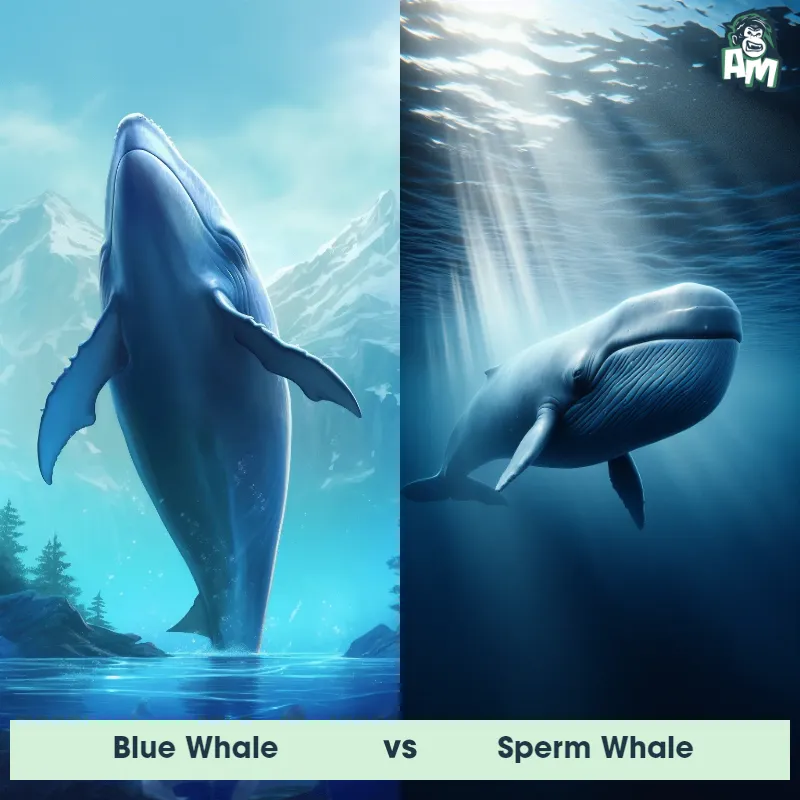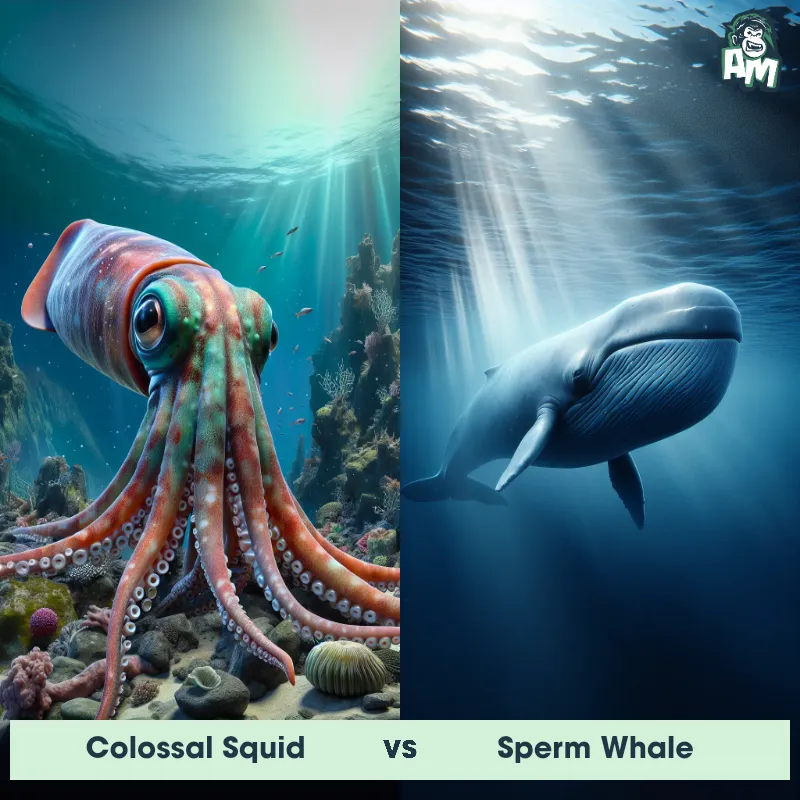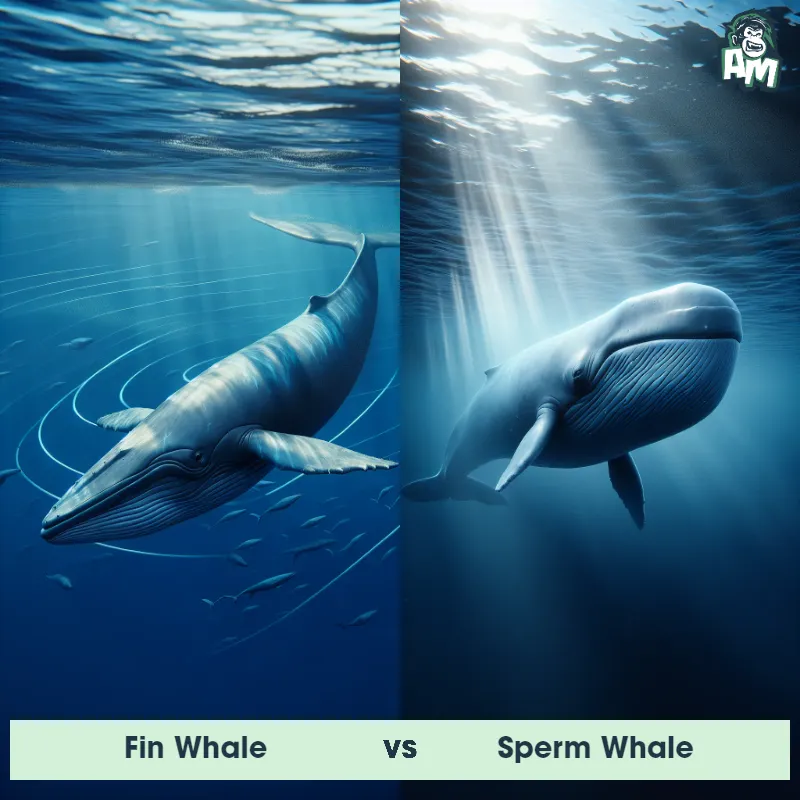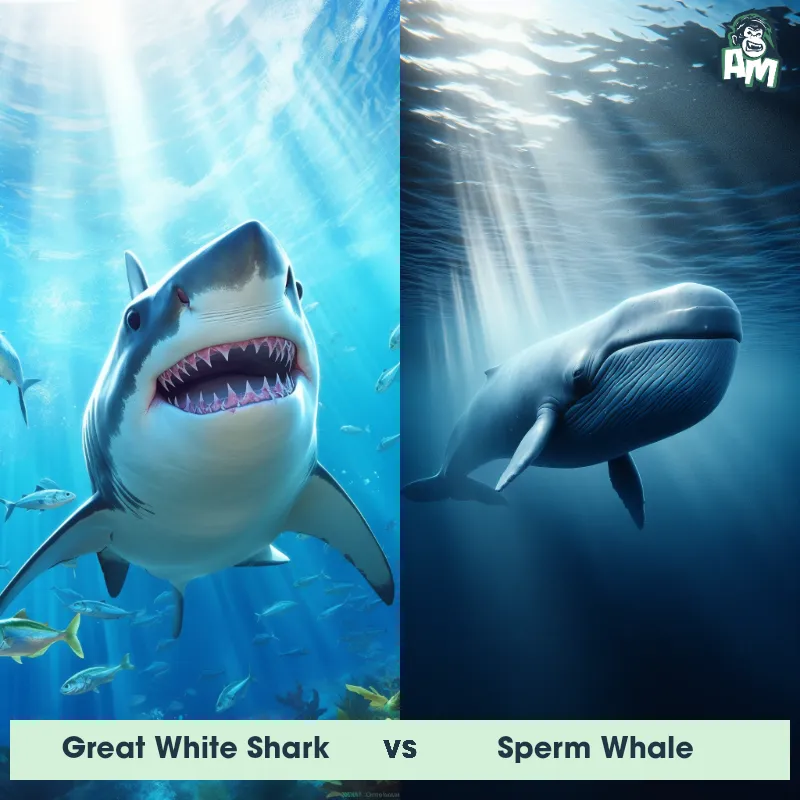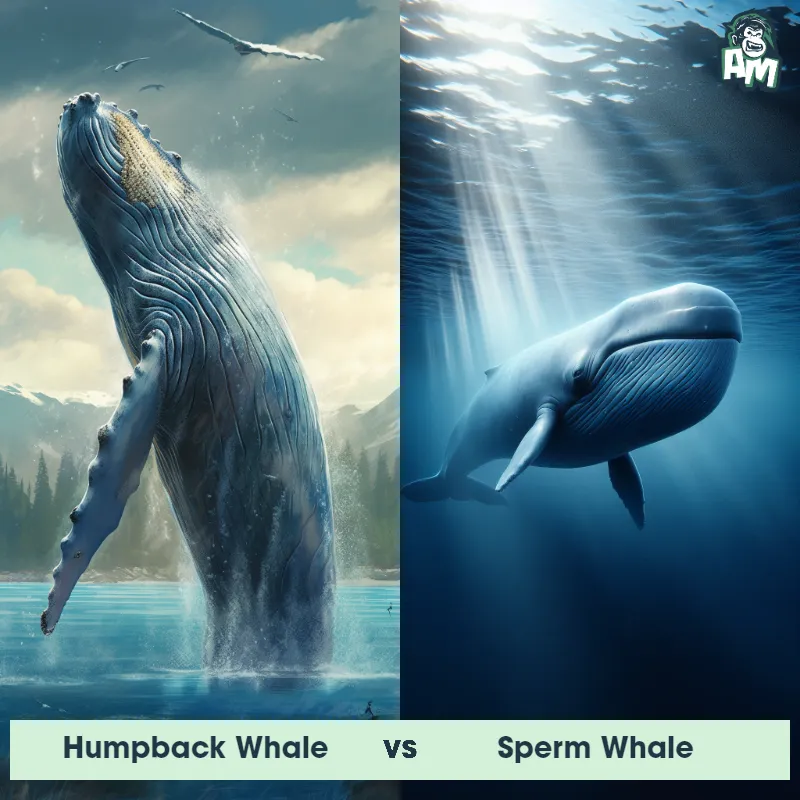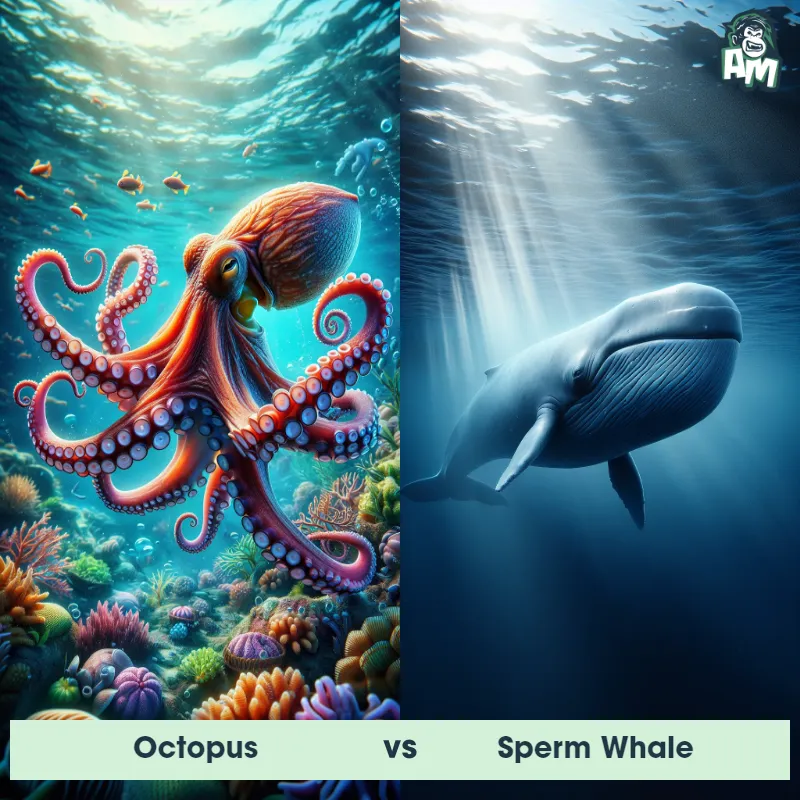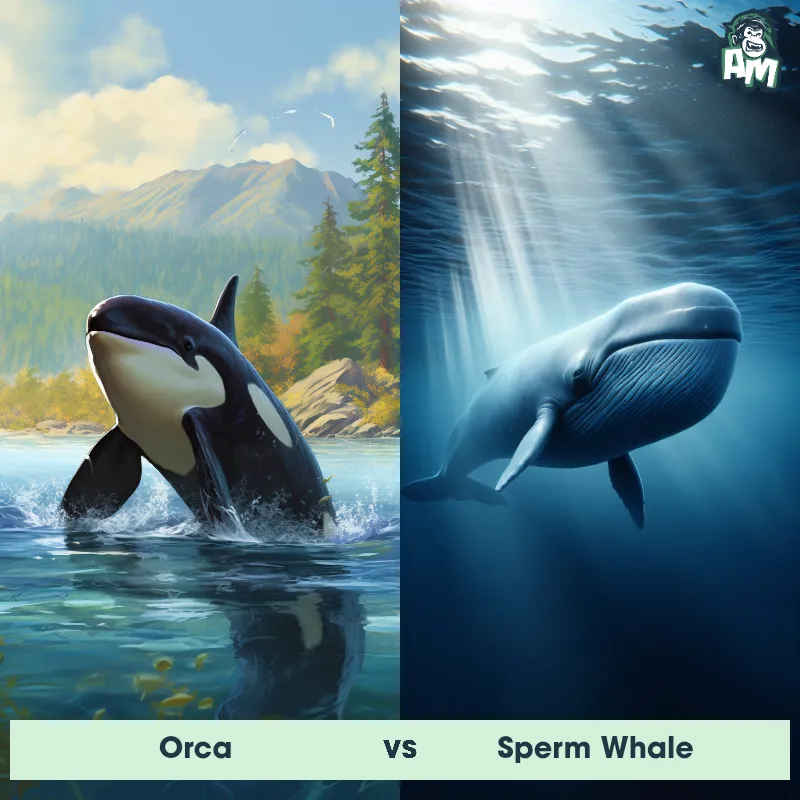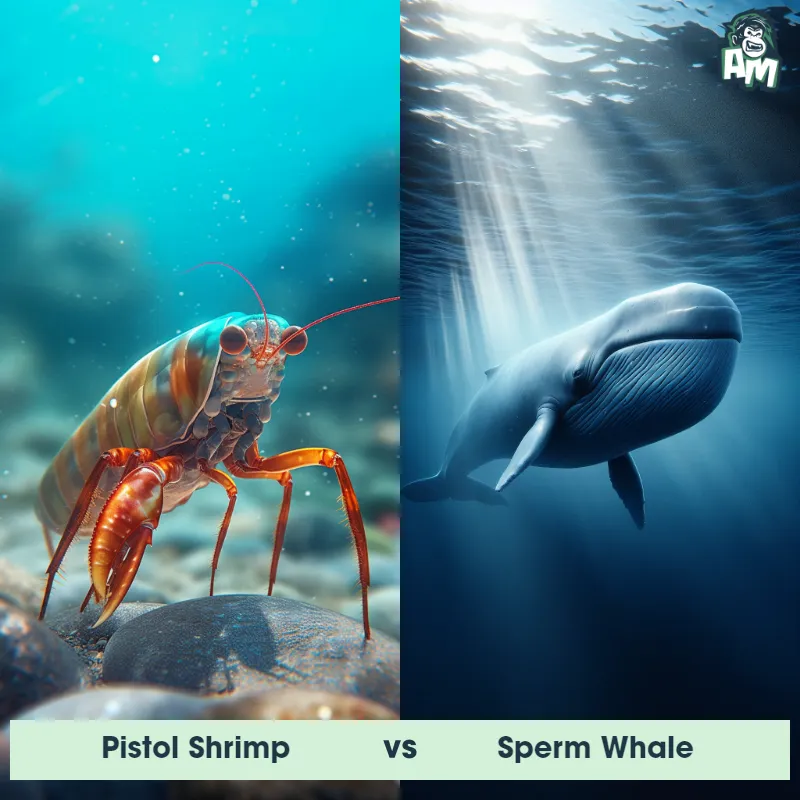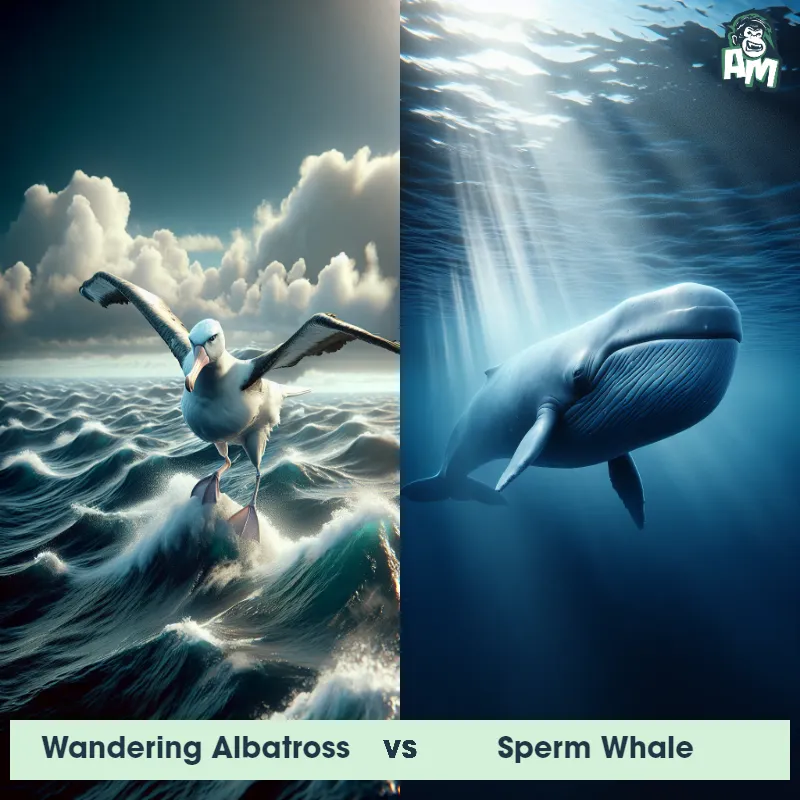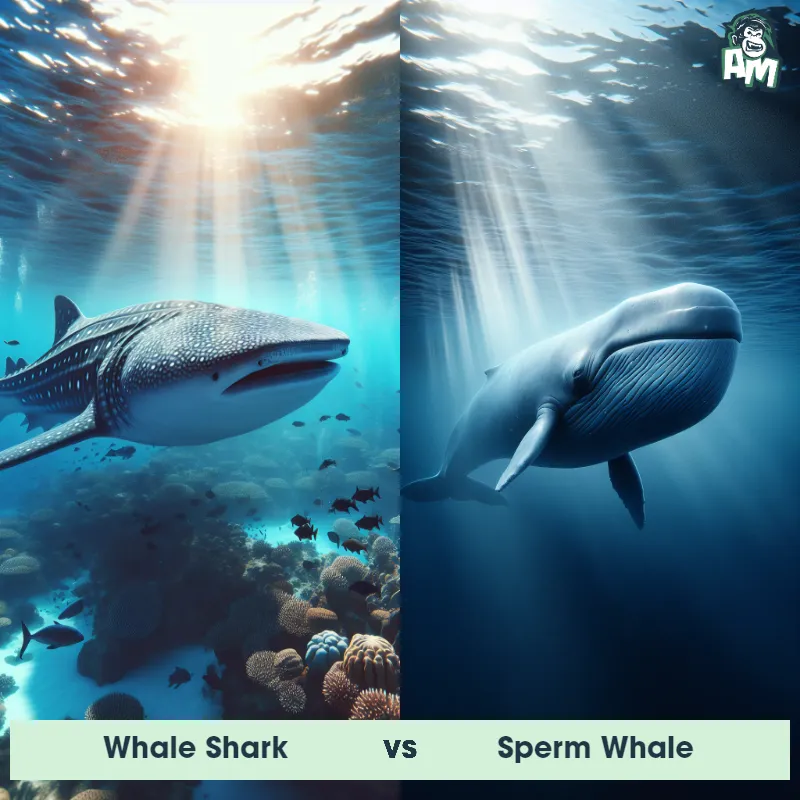The Sperm Whale
The Sperm Whale, also known as Physeter macrocephalus, is the largest toothed predator in the world, measuring up to 60 feet in length and weighing around 50 tons. This magnificent creature is characterized by its massive oval-shaped head, which accounts for one-third of its total length. It has a unique blowhole positioned on the left side of its head, and its lower jaw protrudes prominently, housing impressive ivory-colored teeth that can reach up to 8 inches in length. Sperm Whales are renowned for their ability to dive to great depths, often exceeding 3,280 feet, in search of their preferred prey, squid. They have a distinctive wrinkled skin, usually gray or brownish in color, and often exhibit scars resulting from confrontations with giant squid.

| Sperm Whale | |
|---|---|
| Size | Up to 60 feet (18 meters) long |
| Weight | Up to 50 tons (45,359 kilograms) |
| Speed | 23 mph (37 km/h) |
| Key Strength | Strong and powerful tail for swimming and propelling through water |
| Biggest Weakness | Vulnerable to attacks on the surface due to slow speed |
| Scientific Name | Physeter macrocephalus |
| Family | Physeteridae |
| Habitat | Deep ocean waters |
| Geography | Found in oceans worldwide, but mostly in tropical and temperate regions |
| Diet | Mainly deep-sea cephalopods like giant squid |
| Lifespan | 70 years - 90 years |

The Sperm Whale
The Sperm Whale, also known as Physeter macrocephalus, is the largest toothed predator in the world, measuring up to 60 feet in length and weighing around 50 tons. This magnificent creature is characterized by its massive oval-shaped head, which accounts for one-third of its total length. It has a unique blowhole positioned on the left side of its head, and its lower jaw protrudes prominently, housing impressive ivory-colored teeth that can reach up to 8 inches in length. Sperm Whales are renowned for their ability to dive to great depths, often exceeding 3,280 feet, in search of their preferred prey, squid. They have a distinctive wrinkled skin, usually gray or brownish in color, and often exhibit scars resulting from confrontations with giant squid.
Fun Fact: The Sperm Whale has the largest brain of any known animal, weighing around 17 pounds, which is more than five times heavier than the human brain.
| Sperm Whale | |
|---|---|
| Size | Up to 60 feet (18 meters) long |
| Weight | Up to 50 tons (45,359 kilograms) |
| Speed | 23 mph (37 km/h) |
| Key Strength | Strong and powerful tail for swimming and propelling through water |
| Biggest Weakness | Vulnerable to attacks on the surface due to slow speed |
| Scientific Name | Physeter macrocephalus |
| Family | Physeteridae |
| Habitat | Deep ocean waters |
| Geography | Found in oceans worldwide, but mostly in tropical and temperate regions |
| Diet | Mainly deep-sea cephalopods like giant squid |
| Lifespan | 70 years - 90 years |
Sperm Whale Matchups
We use AI to simulate matchups between the Sperm Whale and other animals. Our simulation considers size, strength, and natural predatory behaviors to determine the most likely outcome.

Can't find the Matchup you want?
Create Your Own MatchupSperm Whale: Diet, Predators, Aggression, and Defensive Behaviors
What do Sperm Whales eat?
Sperm Whales primarily feed on squid, including giant squid and colossal squid, as well as octopus and fish. They have specialized teeth in their lower jaw that fit into sockets in their upper jaw, allowing them to efficiently catch and consume their prey.
Do Sperm Whales have any predators?
Sperm Whales are apex predators in their marine environment, meaning they are not typically preyed upon by other animals. However, occasionally, they may fall victim to killer whales (orcas) who target young or weakened individuals.
Are Sperm Whales aggressive?
Sperm Whales are not generally considered to be aggressive towards humans. They are known to be social animals, often seen traveling in groups called pods, and have been observed interacting peacefully with other marine species.
Do Sperm Whales fight?
Male Sperm Whales are known to engage in aggressive interactions with each other during breeding season or when competing for mates. These fights can involve ramming each other with their heads or slamming their bodies against one another.
How do Sperm Whales defend themselves?
Sperm Whales have several defense mechanisms to protect themselves from threats. When faced with danger, they may use their powerful tail flukes to create a loud noise by slapping the surface of the water, called a breach, which can deter predators or signal warning to other whales nearby.
What is the Sperm Whale's biggest weakness in a fight?
Despite their size and strength, the Sperm Whale's biggest weakness in a fight is their vulnerability to being hunted by humans. Historically, they have been hunted for their blubber, meat, and spermaceti oil, leading to a significant decline in their population. Today, they are listed as vulnerable by the International Union for Conservation of Nature (IUCN) due to ongoing threats such as pollution, entanglement in fishing gear, and climate change.
Fun Fact: Sperm Whales produce a unique clicking sound called "coda." These clicks, which can be over 200 decibels, are used for echolocation and communication between members of their pod, allowing them to navigate underwater and find their prey in the dark depths.
Fun Fact: Sperm Whale's head is filled with a mixture of a waxy oil called spermaceti, which was mistakenly believed to be sperm by early whalers who hunted them for their valuable spermaceti oil. This substance aided in buoyancy control and is thought to play a role in their communication and echolocation abilities.



